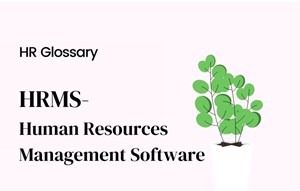Employee experience

[Sommaire]
What is the employee experience?
The employee experience is how employees feel about their jobs and workplace. It includes everything from the physical environment to the company culture and how employees are treated by their managers and co-workers.
A positive employee experience can lead to higher job satisfaction and productivity, while a negative employee experience can result in absenteeism, turnover, and low morale.
There are a number of factors that contribute to the employee experience, including:
- The physical environment: Is the workplace comfortable and well-designed?
- Company culture: Do employees feel like they belong and are valued?
- Employee benefits: Does the company offer competitive pay and benefits?
- Employee development: Are employees given opportunities to grow and advance their careers?
- Employee relations: How do their managers and co-workers treat employees?
Why is it important to enhance employee experience in a company?
Employee experience is the result of the many components that create an employee’s perception of the company they work for. If an organization has a positive employee experience, then they will see :
- Lower turnover
- Better productivity
- Lower absenteeism
- Easier recruitment.
How to conceive your employee experience strategy?
You can conceive your employee experience framework through the employee lifecycle. There are different employee experiences for every stage in the employee journey maps:
Recruitment:
The first contact that a candidate has with your company will shape their opinion of your company for years to come. You need to make sure that your recruitment process is streamlined and efficient and that your company is presenting itself in the best light possible.
Onboarding:
A positive onboarding experience will help new employees settle into their roles quickly and efficiently. Make sure that you have a comprehensive onboarding program that covers all the basics and gives new employees plenty of opportunities to ask questions and get to know their colleagues.
Engagement:
Employee engagement is all about keeping employees motivated and invested in their work. There are many different ways to achieve this, but some of the most effective methods include creating a positive corporate culture, offering opportunities for career development, and providing recognition and rewards for good work.
Performance Management:
Performance management is about setting clear expectations and providing employee feedback that helps them improve their performance. It is important to have a fair and objective employee talent development system in place so that employees feel that they are being treated fairly and allowed to reach their full potential.
Offboarding:
Even if an employee leaves your company on good terms, it is essential to ensure that their exit is managed to protect your company’s interests. This includes ensuring that all employees' belongings are returned and that their access to company systems and data is revoked.
The employee experience is the sum of all an employee's interactions with your company, from recruitment to offboarding. By focusing on creating a positive employee experience, you can improve your company’s performance and retention rates.
How does the behavior of an employee change as experience increases?
With an improved employee experience, you could expect to see :
- Better employee engagement: Employee experience is a key driver of engagement.
- Increased job satisfaction: Employee experience is a major contributor to overall job satisfaction.
- Lower stress levels: Employee experience can help reduce stress levels in the workplace.
- Improved teamworking: Employee experience can lead to an improved team working and collaboration.
- Decreased absence rates: Employee experience is a key factor in absenteeism.
- Improved productivity: Employee experience can lead to enhanced productivity.
How can you create a good employee onboarding experience?
A good onboarding process can be an important element of the employee experience. After the recruitment process, an employee’s first major involvement with an organization is onboarding.
You can create a good employee onboarding experience by :
- Nominating a dedicated manager within the human resources department and building the success of onboarding into that manager’s objectives.
- Starting the onboarding before new employees start their job. This gives them time to lose their nerves and can create optimum productivity sooner.
- Introducing the new hire to everyone they will be working with, as well as important people who they won’t be working with. From the reception team to employees they will collaborate with, by taking time to introduce them properly, they’ll feel welcome and be able to build relationships more easily.
- Creating a full program that will evolve into the employee’s learning and development program. As business and HR leaders, by giving engaged employees visibility of how you will support and develop them, you will improve their engagement and lead to better business performance.
- Giving each new hire a buddy to help them settle in. This doesn’t need to be someone in their team. In fact, giving them a buddy from another department can help them settle in more easily because it will help them integrate into the wider business more easily.
How can you measure the employee onboarding experience?
Metrics that help you measure the employee onboarding experience include :
Employee turnover:
As many as 33% of new hires leave their jobs within 90 days. Reviewing your new hire turnover rate will give you a clear picture of the success of your employee onboarding experience.
New employee satisfaction levels:
Asking new employees about their experience in your organization will help you understand the success of the onboarding process. Crucially, this will also allow you to intervene and improve things if needed.
New employee absence levels:
Higher than expected levels could suggest employees are stressed, being bullied, or disengaged with their new role.
New employee productivity levels:
An employee who is more productive sooner will likely benefit from a more effective onboarding.
What are the best tools to improve the employee experience?
There are many ways to improve the employee experience; what works for one organization may not be appropriate for another. However, some tools are universally helpful. These include :
An ATS (Applicant Tracking Service)
You can make the recruitment process smoother even before an employee joins your organization. An ATS helps you manage recruitment and contact candidates for a smoother experience.
A self-service HRIS
This enables employees to stay on top of all their important information without needing to request these details. You can include training programs, performance reviews, and even outstanding annual leave.
Collaboration software
As employees increasingly work flexible hours or in multiple locations, collaboration software will make their roles easier and teamwork more satisfying. Good collaboration software will improve communication and transparency, allowing better team recognition – essential for an enhanced employee experience.
An LMS (Learning Management System)
Giving employees access to learning management systems allows them to develop at their own pace and fit in mandatory training at a convenient time. Employees can also identify new training programs for themselves, allowing them to take control of their future career development.


